Sheet pan dinners are the quintessential solution for busy weeknights when time is scarce but the desire for a home-cooked meal prevails. These recipes embody the essence of simplicity and convenience, allowing both novice cooks and seasoned chefs to create nutritious, flavorful meals with minimal cleanup.
In this article, we will explore an array of sheet pan dinner recipes that cater to a diverse palate, from hearty vegetables and succulent meats to perfectly seasoned seafood. Each recipe is designed to maximize flavor while minimizing preparation and cooking time.


By roasting ingredients together on a single pan, these dishes allow the natural flavors to meld beautifully, resulting in a delightful symphony of taste and texture that can satisfy any appetite.
Not only will we provide step-by-step instructions for each recipe, but we’ll also include tips on how to choose the best ingredients, customize dishes to dietary preferences, and even suggest ways to repurpose leftovers. Whether you’re a meat-lover, vegetarian, or somewhere in between, you’ll find inspiration to make dinner a stress-free yet delicious part of your day.
1. Choose the Right Pan: Invest in a sturdy, heavy-duty sheet pan. Thin or flimsy pans can warp under high heat and may not distribute heat evenly, resulting in uneven cooking. A pan with a lip is essential to prevent juices from spilling into the oven.
2. Preheat the Pan: Just as you would preheat an oven, preheating your sheet pan ensures better searing and caramelization of your ingredients. Place the pan in the oven while it heats up to give your food a head start on cooking.
3. Use Parchment Paper or Foil: Lining your sheet pan with parchment paper or aluminum foil makes cleanup a breeze and helps prevent food from sticking. For particularly sticky or delicate foods, a light spritz of cooking spray on top of the liner can add extra insurance.
4. Cut Ingredients Uniformly: Uniformly cut ingredients ensure even cooking. If your vegetables and proteins are of different sizes, the smaller pieces may overcook or burn while larger ones are still undercooked. Aim for consistency in size and shape.
5. Mind the Moisture: Too much moisture can steam your ingredients instead of roasting them. Pat dry proteins and vegetables with paper towels before seasoning and placing them on the sheet pan. If using marinated items, shake off excess marinade before baking.
6. Arrange Ingredients Strategically: Placement matters. Spread ingredients out in a single layer without overcrowding. Overcrowding can lead to steaming rather than roasting, preventing that desirable crispy texture. Leave some space between items for air to circulate.
7. Stagger Cooking Times: Different ingredients have different cooking times. Start with longer-cooking items like root vegetables and add quicker-cooking items like green vegetables or seafood later. This ensures everything finishes cooking at the same time.
8. Season Generously: Don’t skimp on seasoning. Since sheet pan dinners typically combine various ingredients, using ample seasoning ensures every bite is flavorful. Consider using a mix of fresh herbs, spices, and aromatics to enhance the dish.
9. Rotate and Toss: Halfway through the cooking process, rotate the pan and toss the ingredients. This promotes even browning and ensures that all sides of the food are cooked properly. It also helps to redistribute juices and flavors.
10. Finish with Freshness: After removing your sheet pan dinner from the oven, add a finishing touch of fresh herbs, a squeeze of lemon juice, or a drizzle of a flavorful sauce. This adds a burst of freshness and brightness, balancing out the roasted flavors.
Recommended Products
Sheet Pan Dinners
1. Sheet Pan Chicken and Veggies
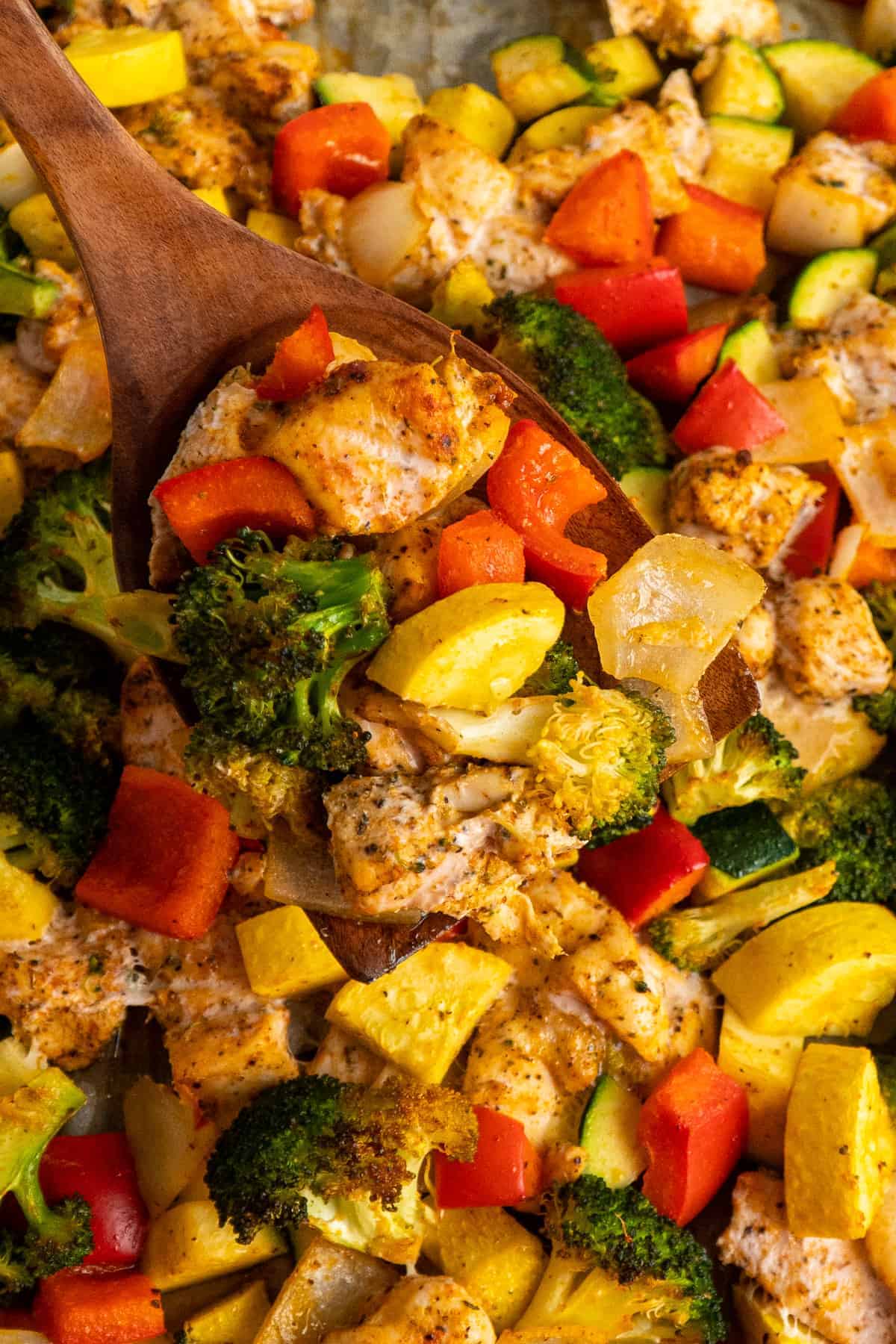
2. Twice-Baked Potatoes
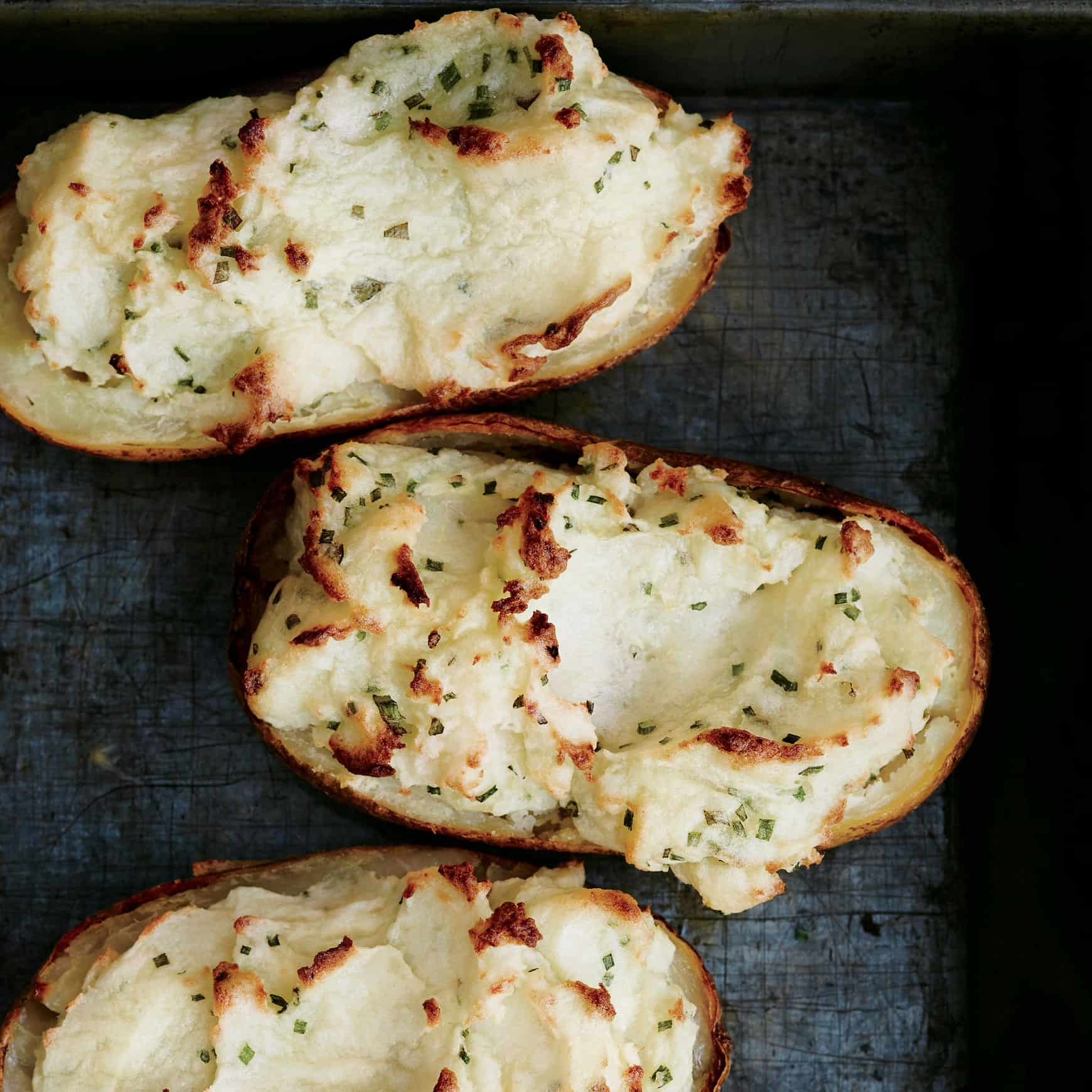
3. Garlic Parmesan Roasted Asparagus
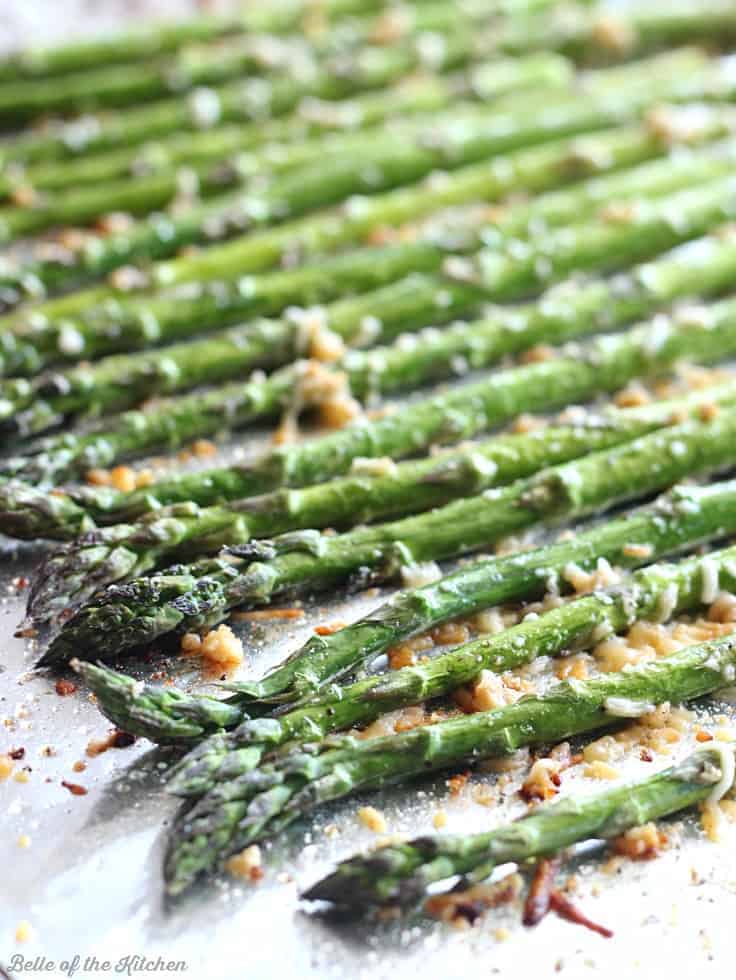
4. Parmesan Roasted Carrots
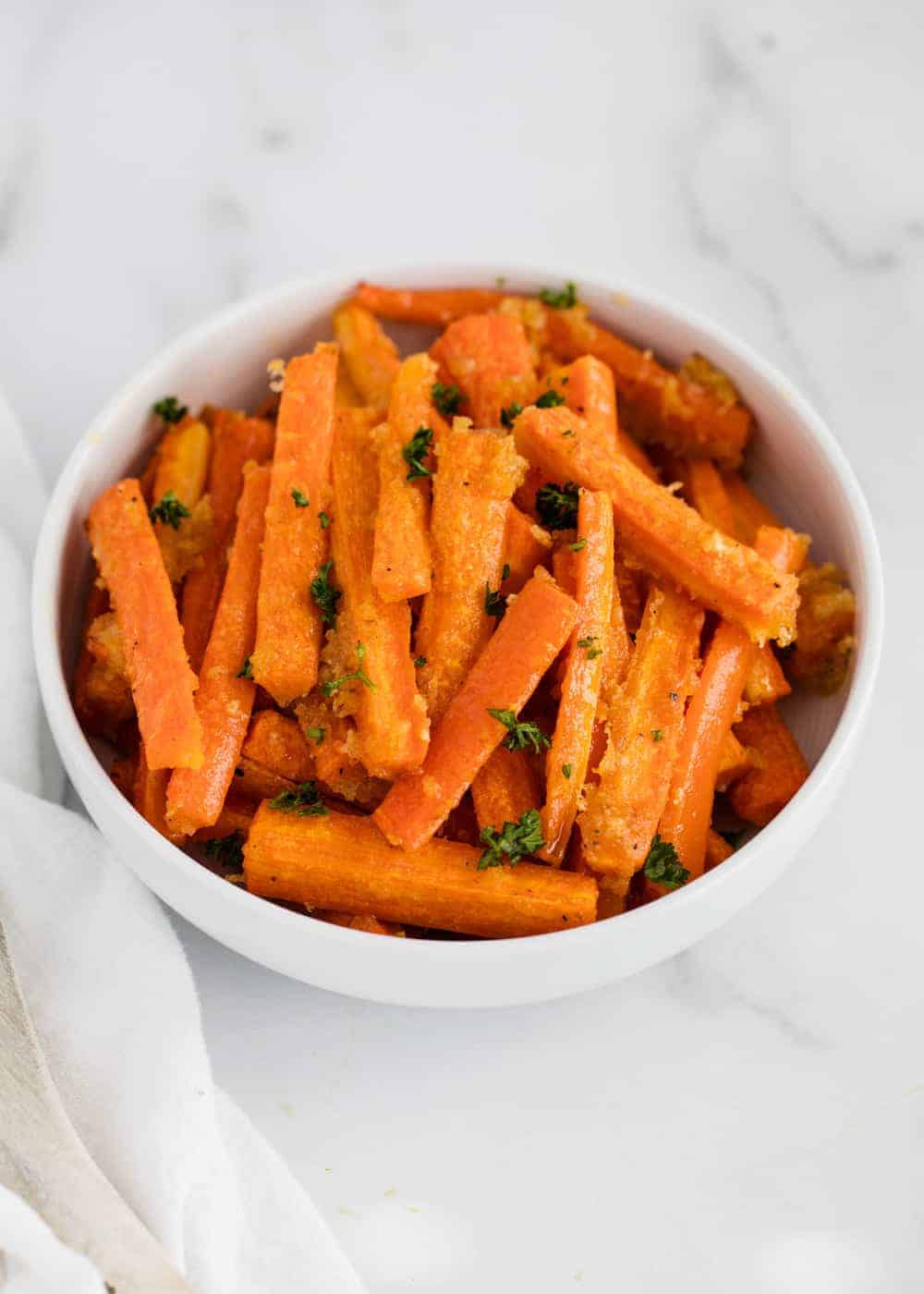
5. Baked Asparagus Fries
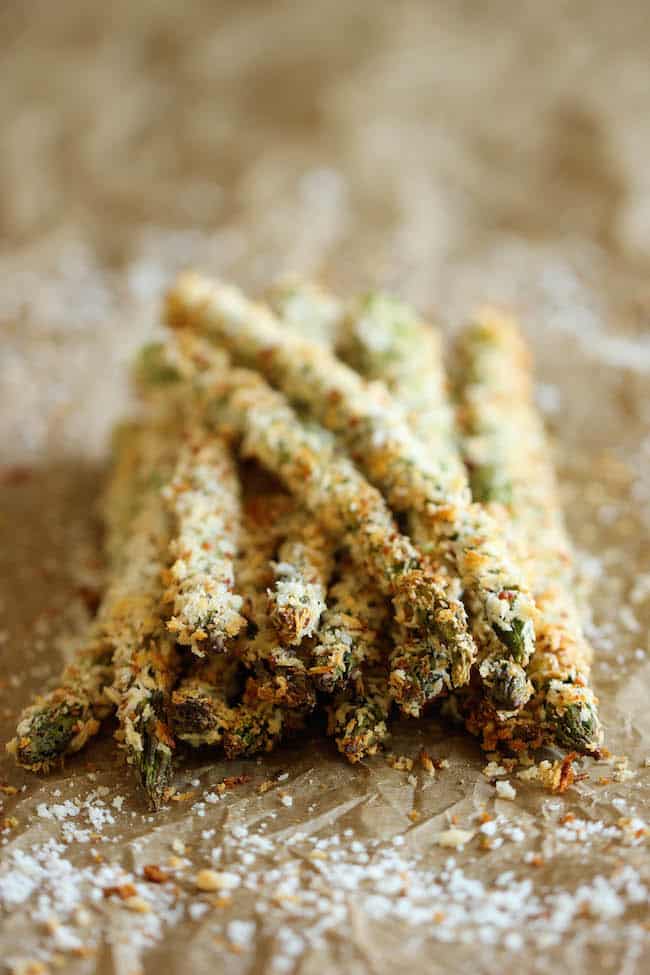
6. Broiled Shrimp & Broccoli
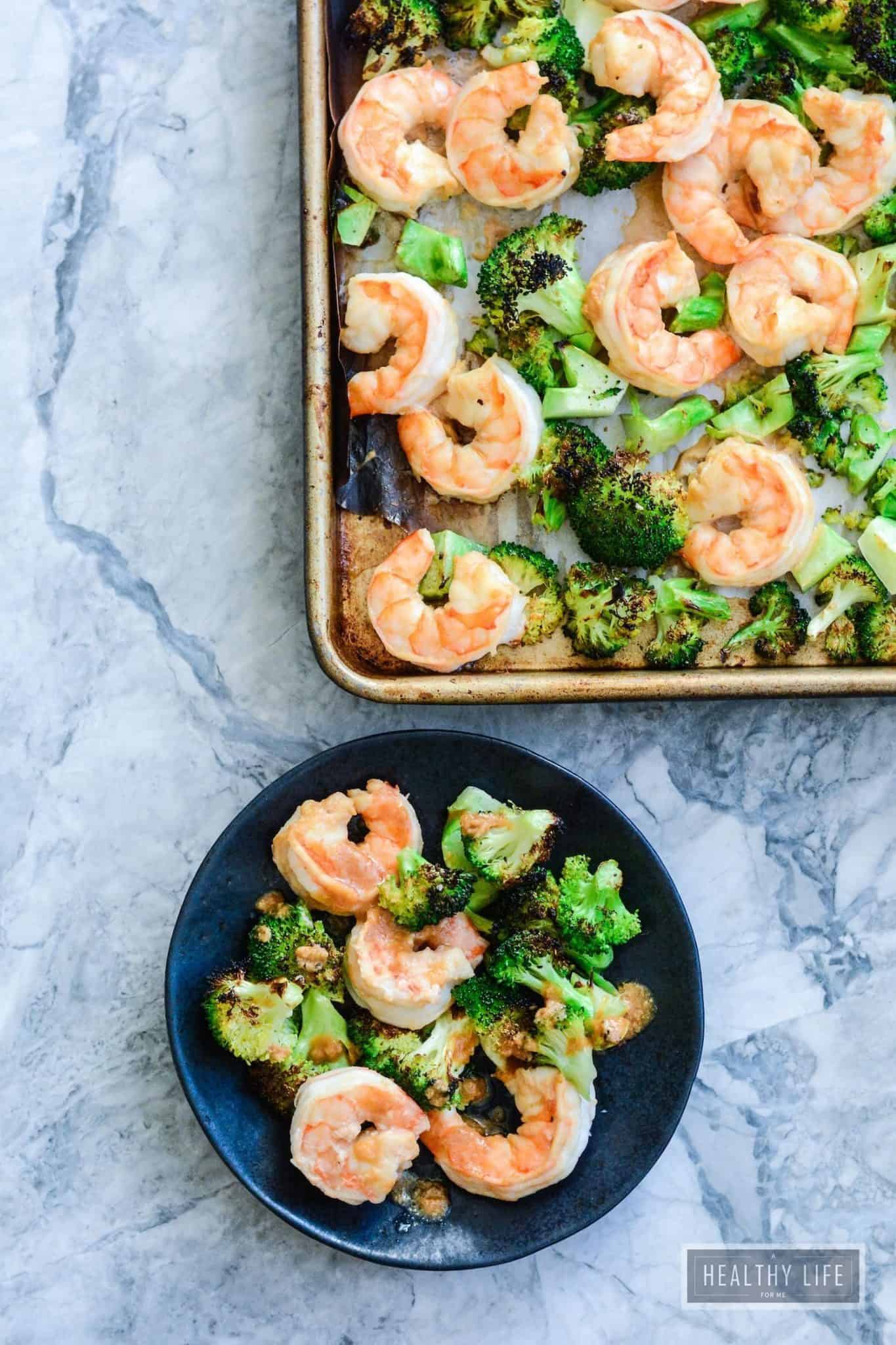
7. Honey Mustard Salmon & Potatoes
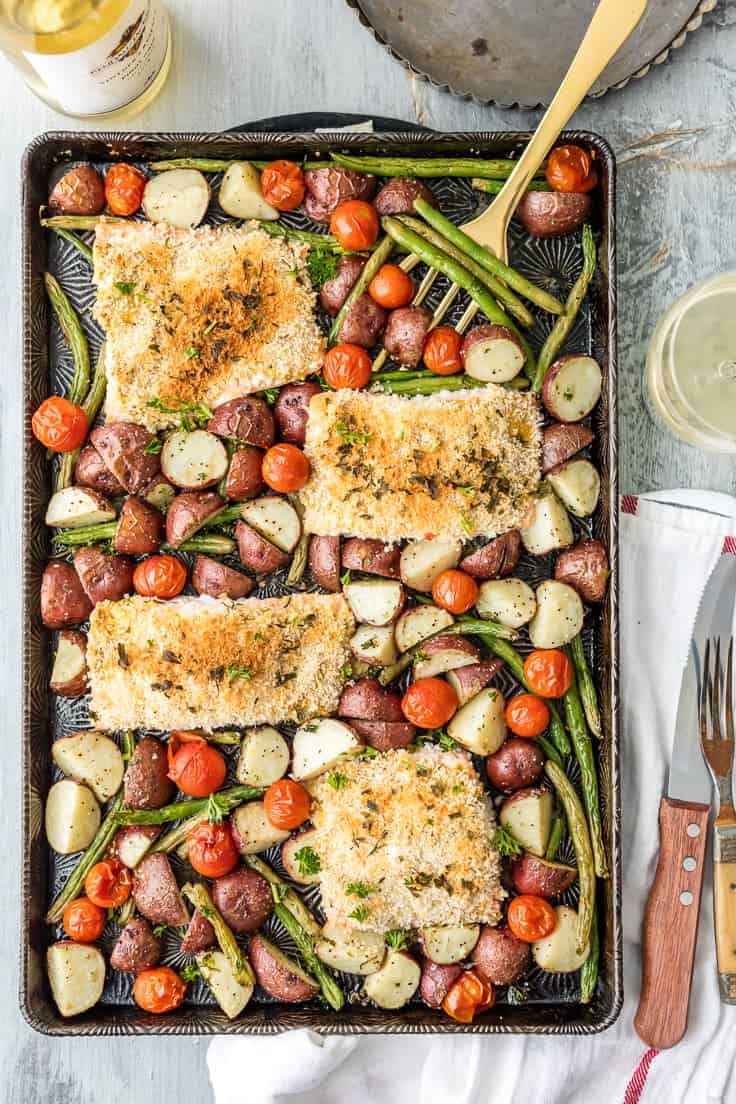
8. Pan Roasted Spicy Garlic Shrimp
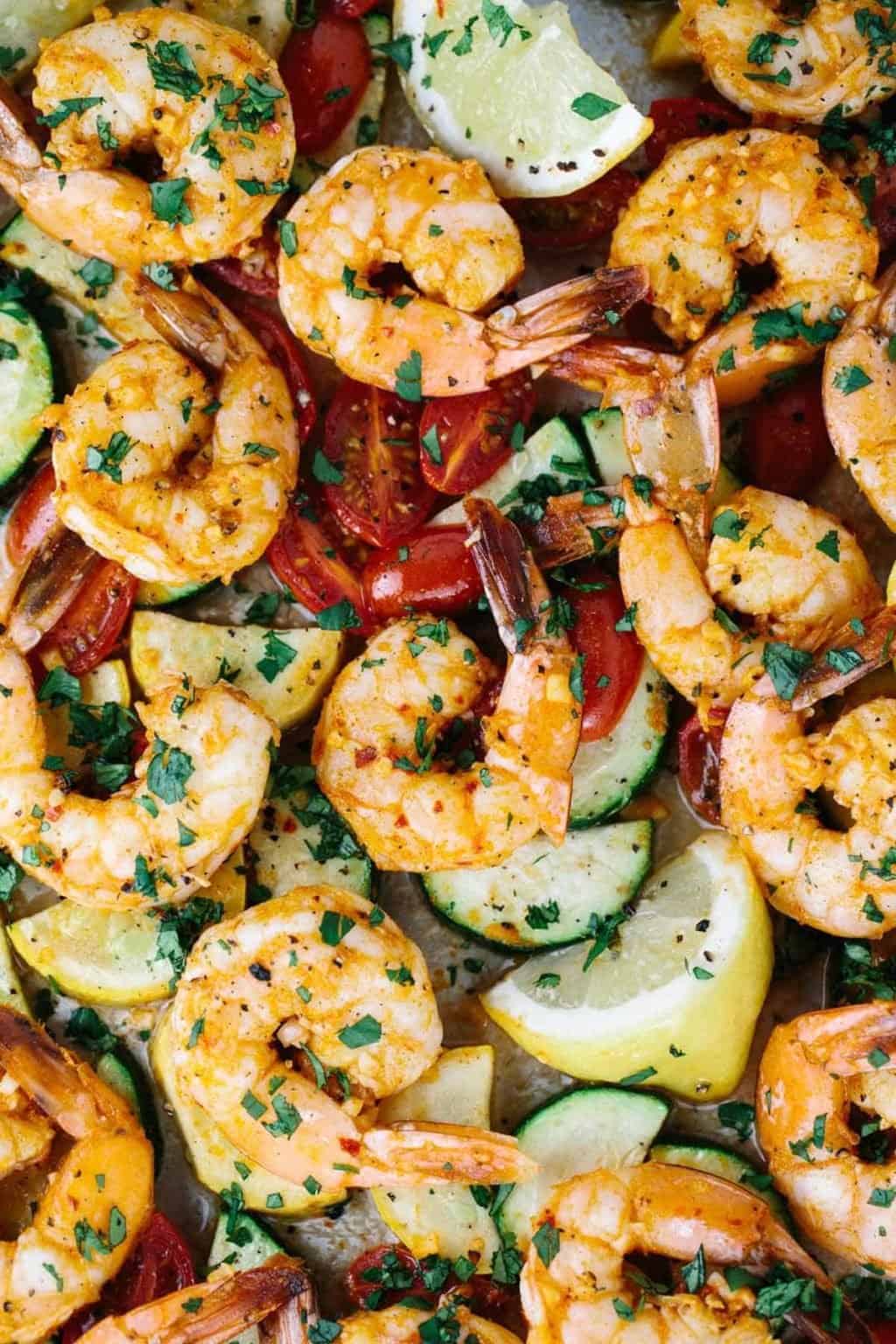
9. Garlic Parmesan Roasted Shrimp
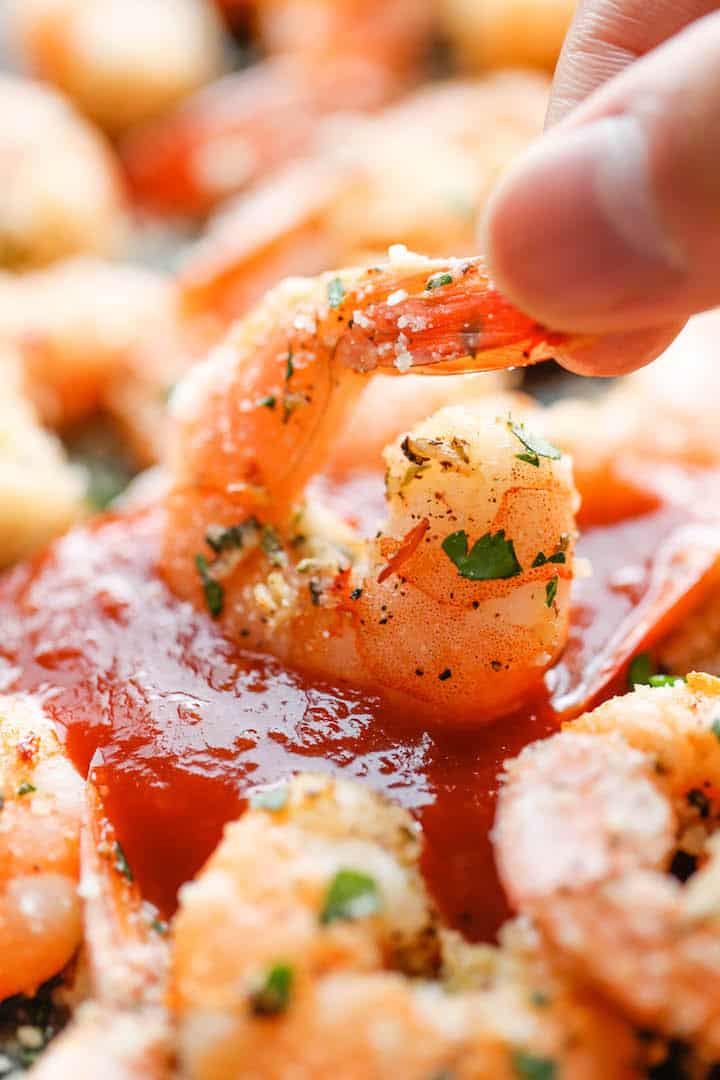
10. Baked Fish & Chips

11. Honey Roasted Turkey & Vegetables
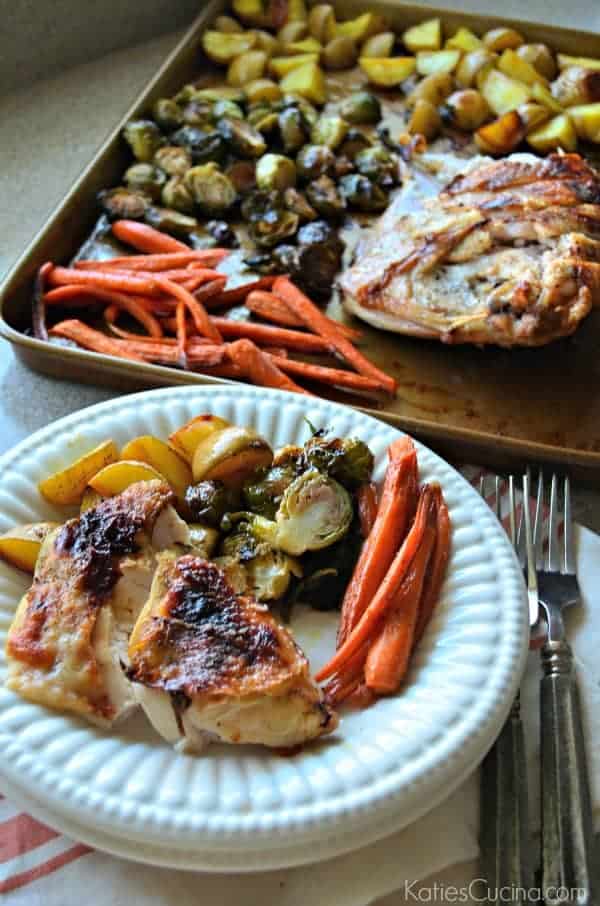
12. Oven Baked Pork Chops with Potatoes
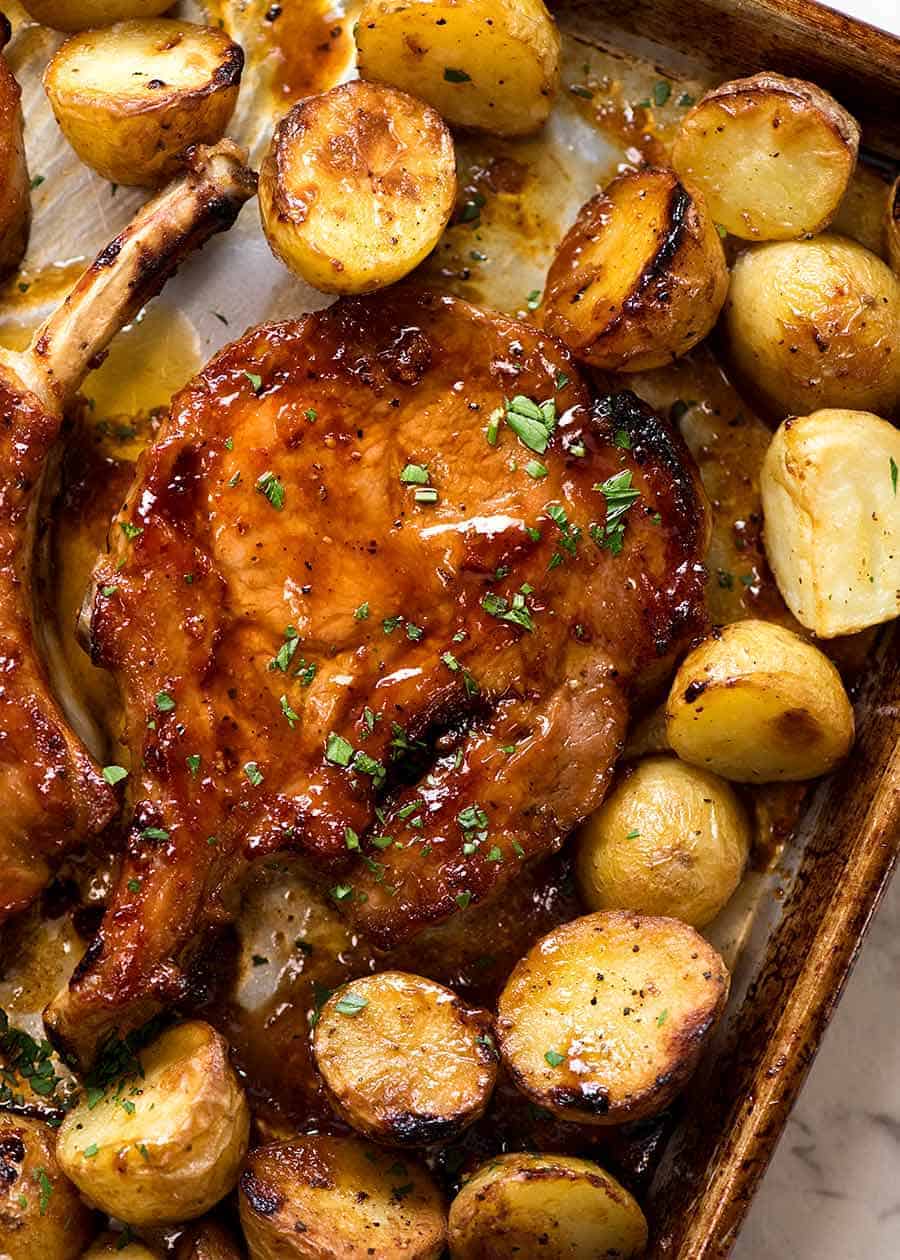
13. Baked parmesan Pork Chops, Potatoe & Asparagus
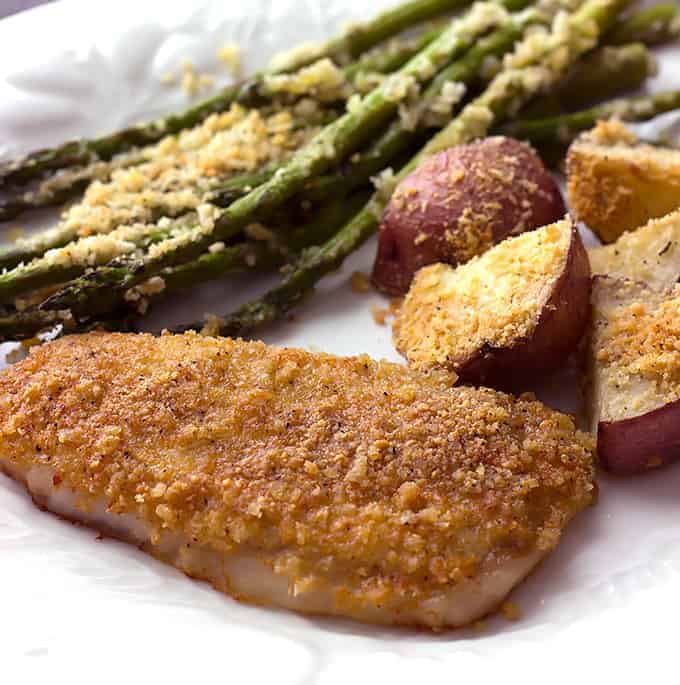
14. Roasted Vegetable & Italian Sausage
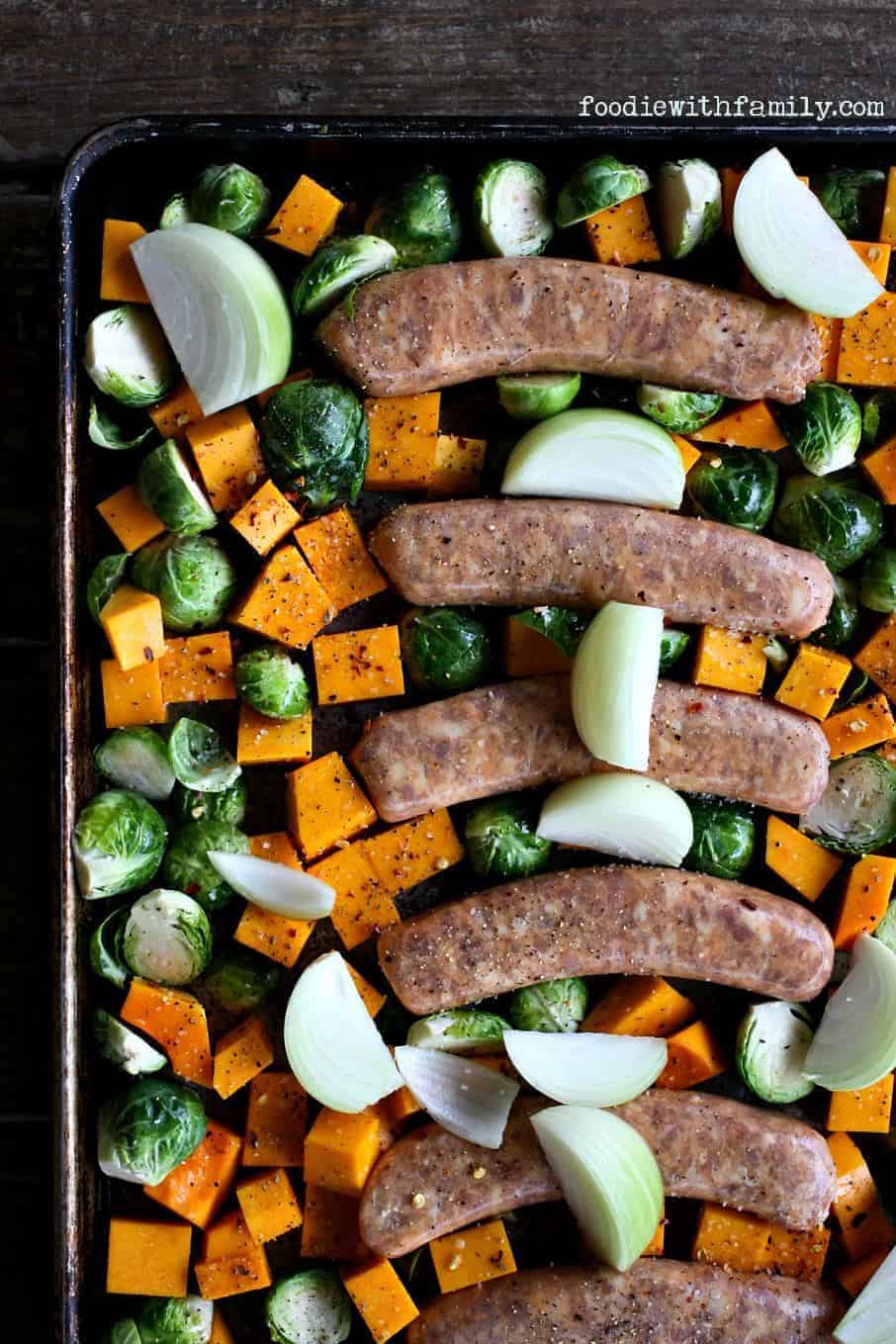
15. Sausage & Peppers
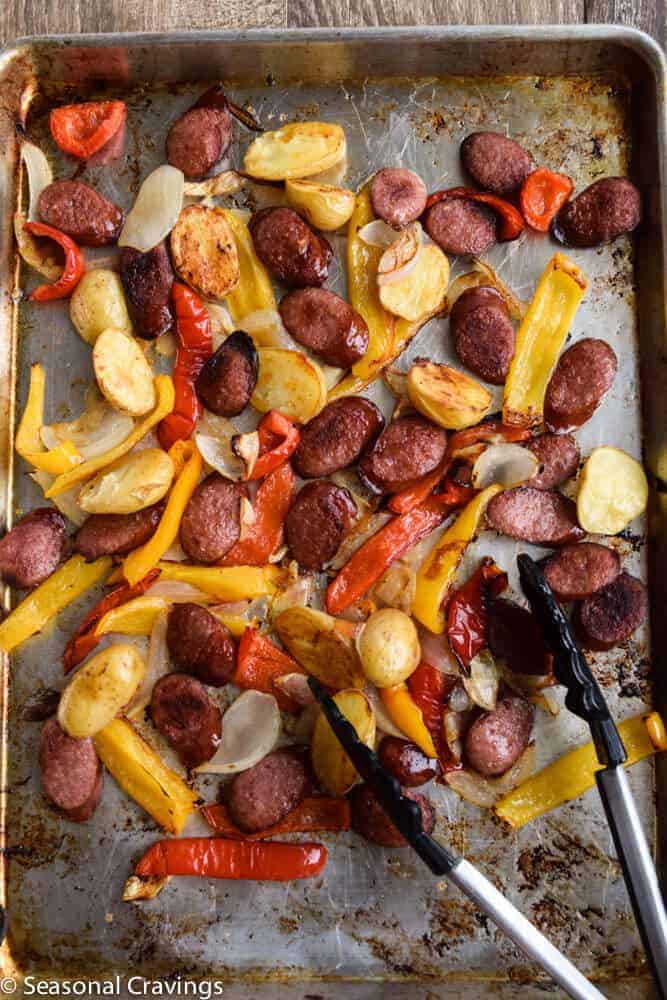
16. Sheet Pan Philly Cheese Steak
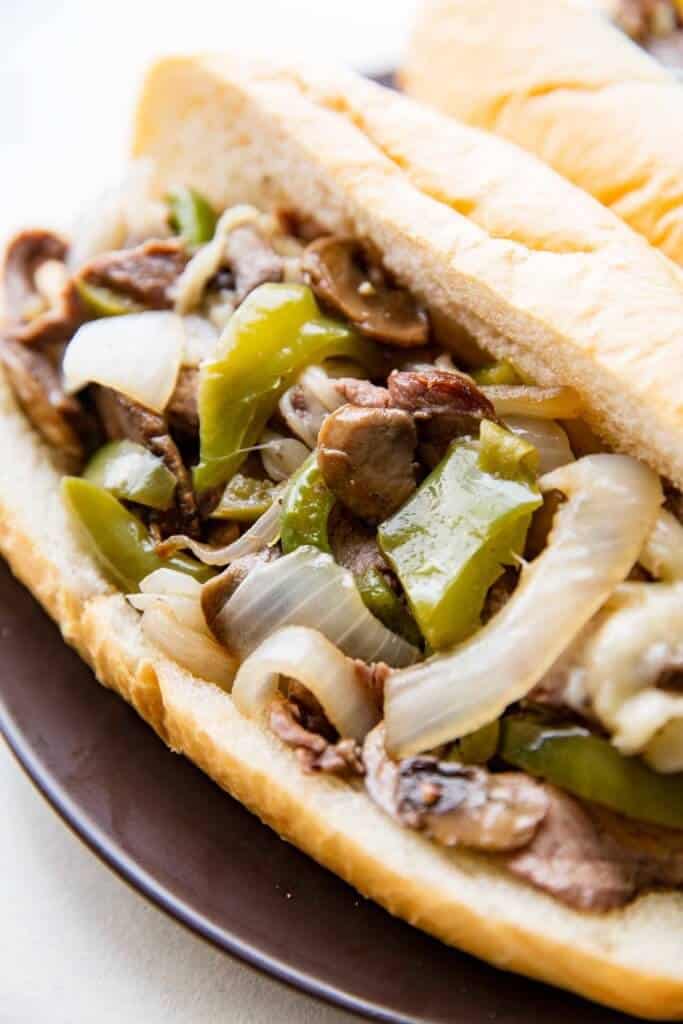
17. Parmesan Crusted Steak & Potatoes
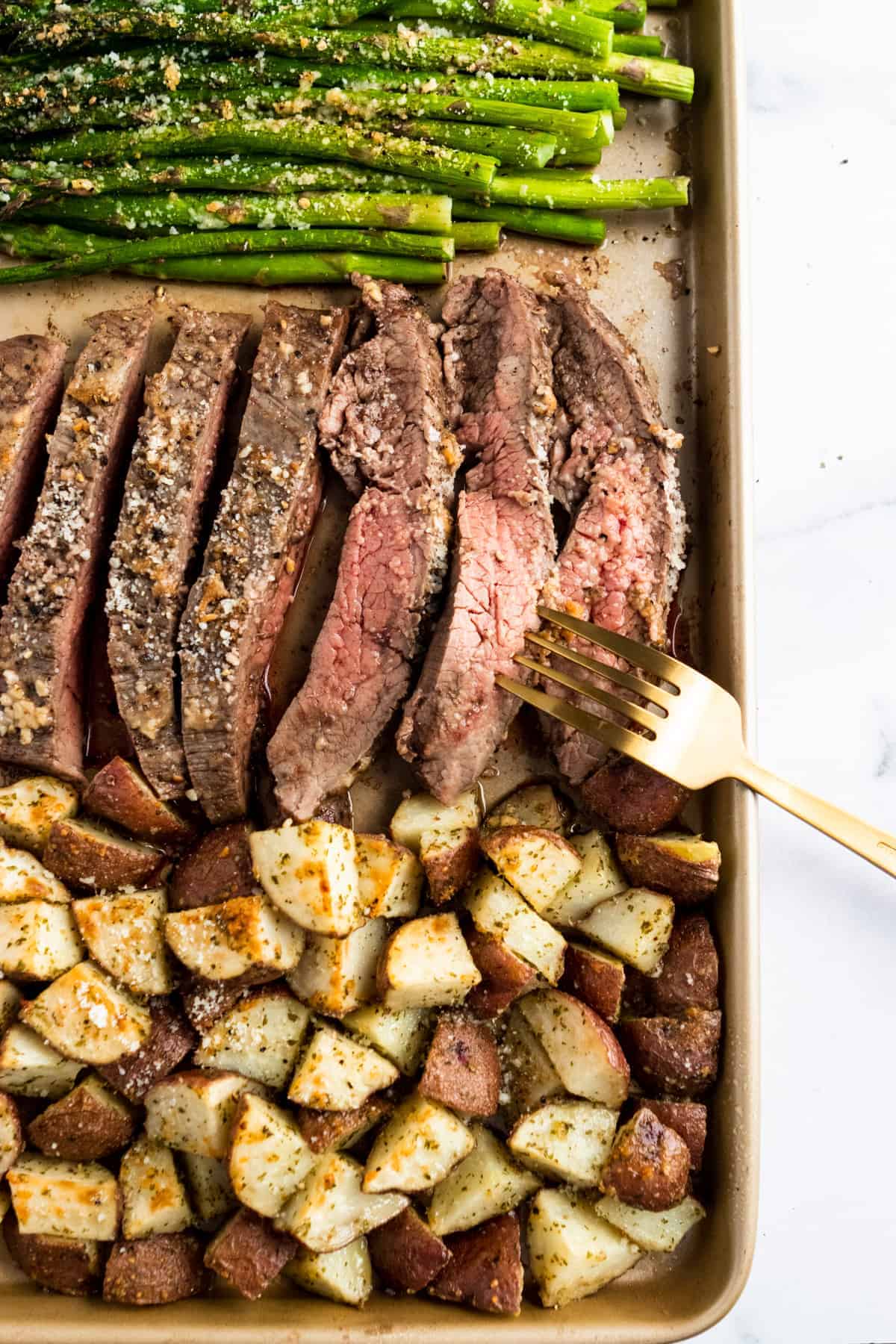
18. Sheet Pan Steak & Veggies
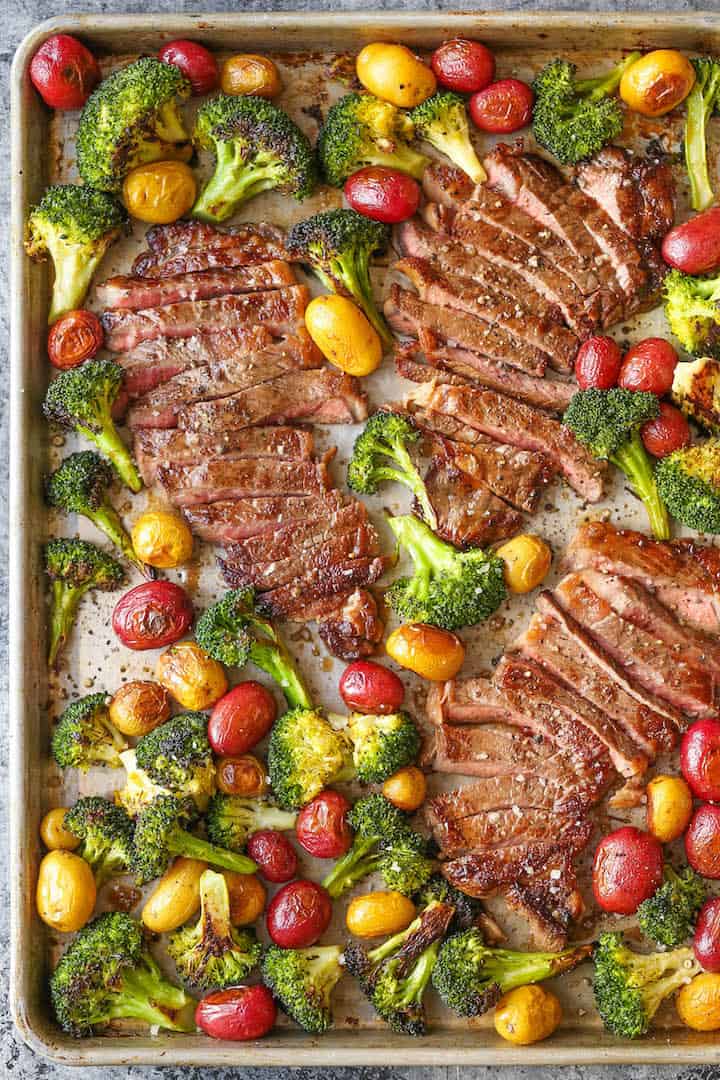
19. Flank Steak Fajitas

20. Rosemary Chicken with Potatoes & Green Beans

21. Sheet Pan Greek Chicken
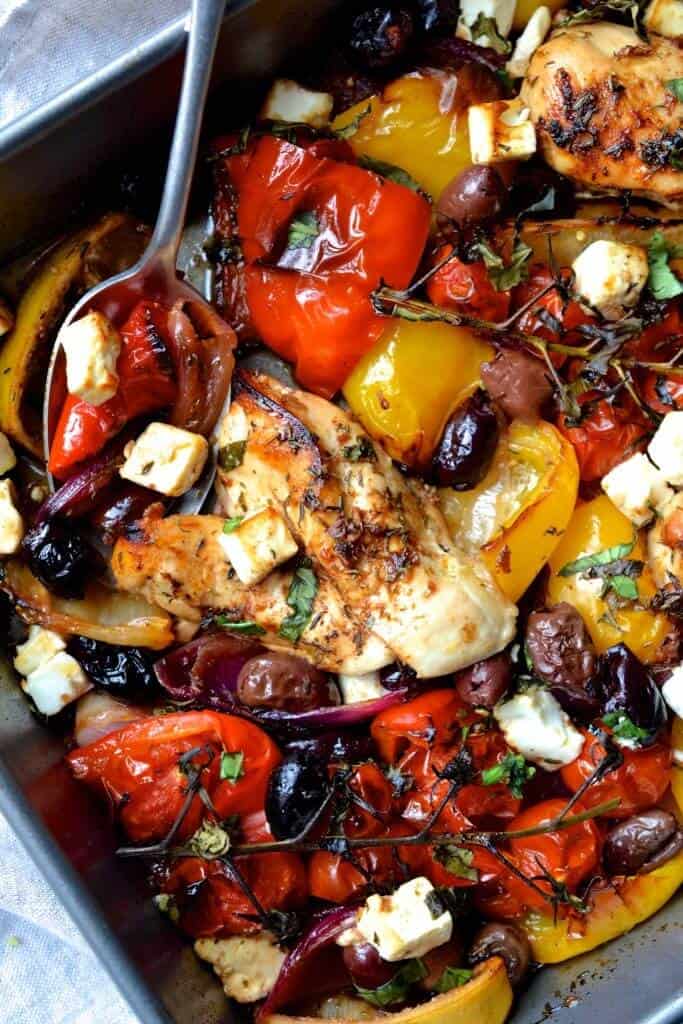
What are the benefits of making sheet pan dinners?
Sheet pan dinners offer several benefits:
Ease of preparation: All ingredients are cooked together on one pan.
Minimal cleanup: Only one pan to clean up after cooking.
Balanced meals: Combine proteins, vegetables, and sometimes grains in one dish.
Efficiency: Cooking everything at once saves time.
What kind of sheet pan should I use?
Use a large, sturdy, rimmed baking sheet (also known as a half-sheet pan). The rim keeps ingredients and juices from spilling over, and a sturdy pan ensures even cooking.
What are some common ingredients for sheet pan dinners?
Common ingredients include:
Proteins: Chicken breasts or thighs, salmon fillets, shrimp, sausage, or tofu.
Vegetables: Potatoes, sweet potatoes, carrots, bell peppers, broccoli, Brussels sprouts, green beans, and zucchini.
Seasonings: Olive oil, garlic, herbs (such as rosemary, thyme, or oregano), salt, and pepper.
How do I prepare ingredients for a sheet pan dinner?
Preheat the oven: Generally, 400-425°F (200-220°C) is ideal.
Chop ingredients: Cut vegetables into uniform pieces to ensure even cooking.
Season: Toss proteins and vegetables with olive oil, herbs, and spices.
Arrange on the pan: Spread everything out in a single layer for even roasting.
Can I use frozen ingredients for sheet pan dinners?
Yes, but they may need extra cooking time. Thaw frozen ingredients beforehand or add them directly to the pan, keeping in mind that they may release more moisture.


